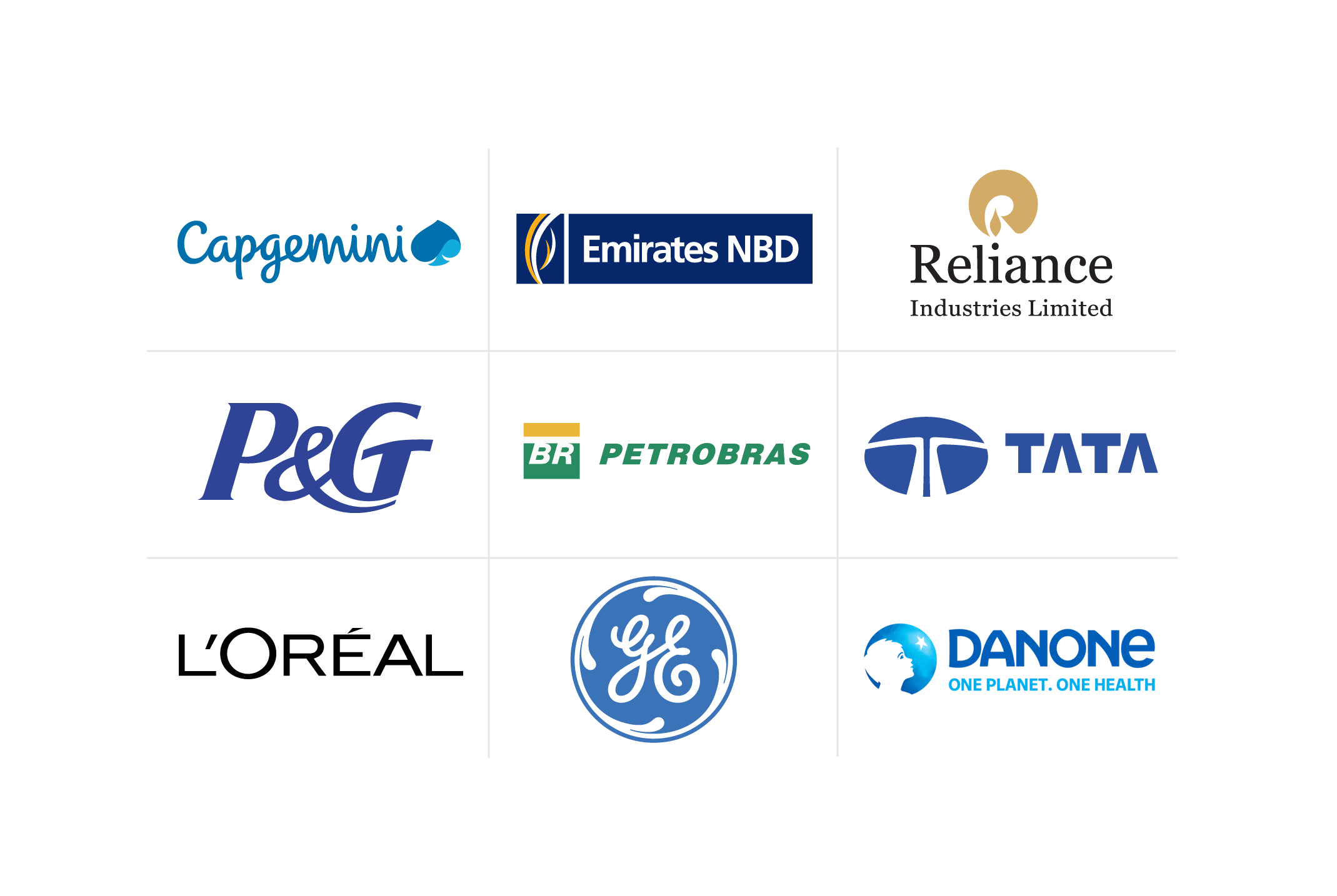Key Performance Indicators Examples for Enhanced Business Performance
Interested in learning about how each industry uses key performance indicators to measure business performance and drive success? Explore what these indicators look like across industries and how to define ones that fit your professional needs.
![[Featured Image] Business leaders discuss key performance indicators examples as they decide on the metrics to use for a new initiative.](https://d3njjcbhbojbot.cloudfront.net/api/utilities/v1/imageproxy/https://images.ctfassets.net/2pudprfttvy6/Vs58UM0tD8Z0h33SBT0Jq/f5d67444677cffd7c75510562bfee590/GettyImages-937775554.jpg?w=1500&h=680&q=60&fit=fill&f=faces&fm=jpg&fl=progressive&auto=format%2Ccompress&dpr=1&w=1000)
Imagine setting a goal for yourself and having no real way of measuring your progress once you’ve completed your efforts. Key performance indicators (KPIs) are an essential tool for measuring performance against business goals while driving organizational success. By providing a clear snapshot of performance across various aspects of a business, KPIs help you make informed decisions, streamline operations, and achieve strategic objectives. KPIs vary by industry, with each sector designing KPIs that align with unique goals and available resources.
Let’s explore key performance indicators examples by sector before learning some tips on how you can begin designing your own.
What is a KPI?
These metrics show you how effectively and efficiently your organization is running. KPIs should be measurable and provide clear insights into whether your organization is achieving its targets and how they trend over time.
Read more: Using Key Performance Indicators for Business Success
When putting together a set of KPIs, you can choose a mix of high-level and low-level KPIs. High-level KPIs offer a macro view of the business’s overall performance, while low-level KPIs focus on specific aspects of departmental operations, tracking more granular objectives and outcomes.
Why are KPIs important for business success?
Incorporating KPIs into your business strategy allows you to take a structured, data-driven approach to understanding and enhancing your business performance across all levels. Using KPIs can help you align your teams toward a common goal, promote a learning culture, and show actual performance trends.
KPIs can help maintain transparency within departments by fostering initiatives that drive growth and holding teams accountable with clear, measurable targets. They also allow you to adjust your strategies, clearly indicating whether your current strategic efforts are working as planned.
Examples of KPIs across sectors
The KPIs suitable for each organization and industry will vary widely. Your KPIs should reflect your unique operational, financial, and strategic needs. Below are examples of sector-specific KPIs that you can use to inspire you about metrics to align your progress toward your goals.
Education KPIs
Educational KPIs typically focus on areas related to academic, research, and supporting sector success. You want to see how well the organization is positioned to grow and how each sector works together. Some ways to track this include:
Gross tuition revenue: This KPI measures the total income received from tuition before any deductions for financial aid. By tracking this, you can see how much income the institution generates through tuition costs.
Administrative costs per learner: This indicator measures the cost incurred per learner for administrative services, which can help you make decisions that optimize your resources.
Learner enrollment and attendance: By tracking enrollment and attendance, you can see trends over time and make decisions on how to improve the longevity and engagement of the student body.
Sales KPIs
Typically, sales KPIs focus on maximizing your return on investment for sales tools and workforce personnel. These KPIs help track progress toward sales targets and monitor customer and employee satisfaction trends. Examples include:
Annual contract value: This KPI tracks average sales in customer contracts over a given period. It helps you identify opportunities for upselling or cross-selling to increase profits and value.
Quota success rate: How often do your salespeople meet their sales goals? This information can help you decide whether current markers are realistic and the steps you need to take to improve the productivity of your workforce.
New leads in the pipeline: Tracking the number of new leads each of your salespeople has in a given period can help you see how often new leads convert to sales and whether you need to divert more energy to find potential opportunities.
Demo-to-sale conversion rate: How often do demonstrations of your product or service lead to sales? This information can help you craft a more impactful sales pitch and strategy.
Information technology sector KPIs
Information technology KPIs can help you track security measures, project progress, user satisfaction, and more. Examples you might choose to include in your business strategy include:
Actual cost of work performed: This KPI helps monitor the budgeted versus actual project cost, which can help you manage project budgets effectively.
Percent of project complete: This indicates the progress of your IT projects, helping teams stay on track and identify potential delays or issues early.
Phishing click-through rates: You can track security measures by seeing how often users click on phishing links to design more effective strategies to prevent fraud or viruses.
Finance KPIs
Financial KPIs track and measure a company’s financial health. They can measure elements like the type of profits you make, how efficiently your operations run, and the valuation of your organization. You can use these KPIs to position and increase profitability over time. Depending on your focus, you might choose to look at:
Total asset turnover: This ratio shows how efficiently a financial institution uses its assets to generate revenue. It can be used to evaluate operational efficiency.
Debt-to-equity ratio: With this measure, you can examine your company’s financial leverage. It represents the amount of equity and debt you use to finance your company’s assets.
Return on equity: This measures your company’s gains by calculating the profit the company generates based on shareholder equity.
How to define KPIs using a SMART framework
The SMART framework provides a pathway for setting clear and achievable goals, making it easier to define the KPIs appropriate for use within your business strategy. It helps ensure you define KPIs that are precise, relevant, and capable of driving significant improvements in organizational performance. When working with the SMART framework, focus on these five categories.
Specific
A KPI should be specific and well-defined, without ambiguity about what you will measure. You should also be able to articulate how to record it. This category makes sure that everyone understands what the KPI is tracking and why it’s important.
For example, you would say, “increase total revenue by 10 percent in the next quarter” rather than “increase total revenue.”
Measurable
The KPI must be measurable, meaning it needs a defined numeric value or a qualitative attribute that can be tracked over time. This allows for precise progress measurement and determining whether your target has been achieved.
For example, you would say, “achieve an average customer product rating of four out of five stars by the end of next month” instead of “improve customer satisfaction.”
Actionable
The KPI should be realistic and attainable with your available resources, timeline, and skills. You need to assess the current performance levels and consider what is achievable.
For example, you might start small by saying, “improve sales by 1 percent next month” rather than “triple sales next month.”
Relevant
The KPI you select should align with the broader business goals and objectives, contributing directly to the organization’s success. A relevant KPI ensures that the efforts concentrate on tasks that truly matter to the organization.
For example, if your goal is to increase product awareness, a relevant goal would be increasing advertisements rather than focusing on the number of employee events you had in a given year.
Time-bound
Each KPI should have a clear timeline specifying when you will assess your outcome. It provides boundaries and guidelines on when to evaluate progress.
You might aim to “call 50 potential customers in the next month” rather than “call 50 potential customers.”
Determine the right KPIs for you.
When choosing KPIs, you should start by identifying the goals you want to achieve. From here, you can align the KPIs with strategic objectives and implement reporting and adjustment pipelines to maximize these measures.
When determining KPIs, start with a few key ones and move from there. If you take on too many too soon, you can overload yourself and your team. Focus on high-priority KPIs supporting your organizational goals, then iterate and adjust as needed.
Learn more on Coursera.
Whether in finance, education, sales, or another industry, KPIs can help you maximize your organizational success and take direct action toward your goals. Learn more about KPIs on the Coursera learning platform with courses, Professional Certificates, and Specializations. Consider Assess for Success: Marketing Analytics and Measurements to try a beginner course. You can also access an extensive catalog of learning opportunities to support your business performance and success on Coursera for Business.
This content has been made available for informational purposes only. Learners are advised to conduct additional research to ensure that courses and other credentials pursued meet their personal, professional, and financial goals.



